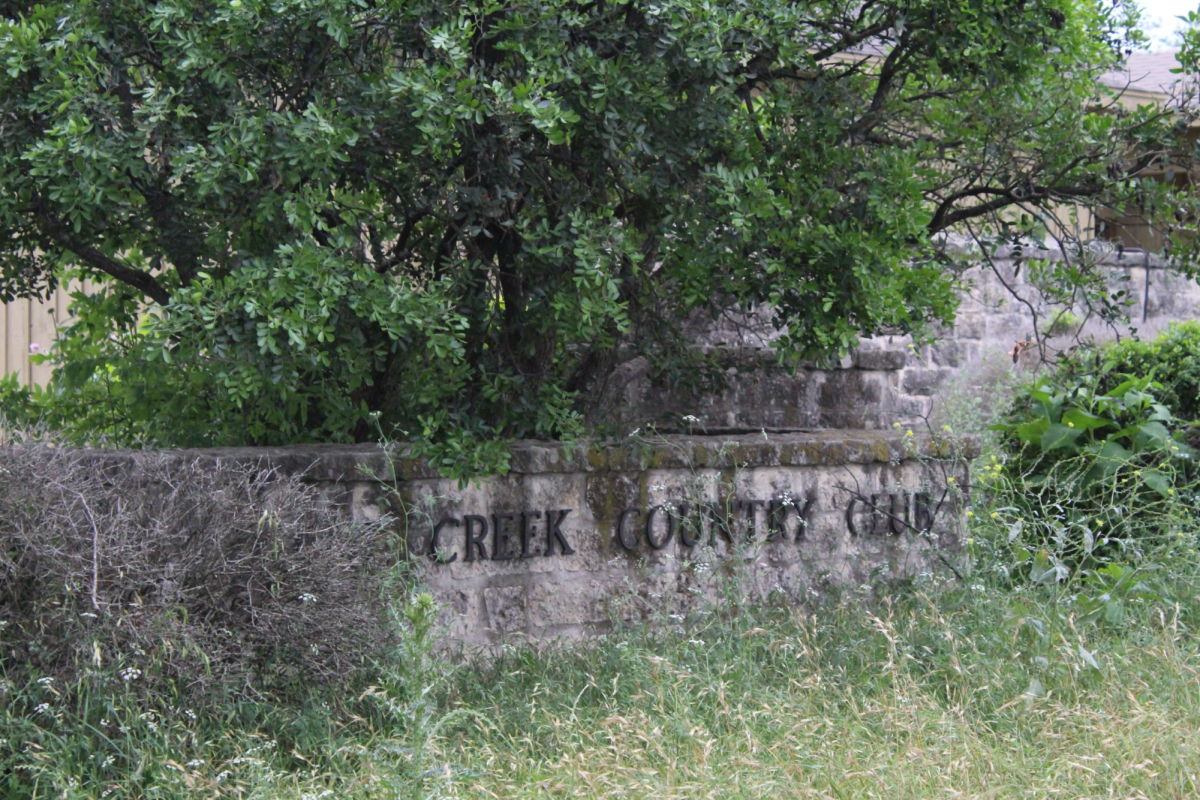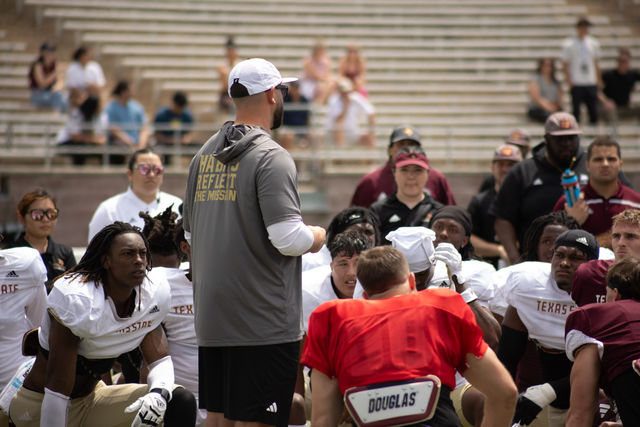A giant dry erase board hugged the walls of coach Bob Stitt’s office. Covered in X’s, O’s, Z’s and Y’s, the board looked like a scene from “A Beautiful Mind,” but for football plays.
Stitt, the new offensive coordinator at Texas State, was the architect of the “fly sweep” play that is used by some of the highest scoring offenses in college football and the National Football League. Stitt brings his innovative offense to Texas State as a member of head coach Jake Spavital’s coaching staff. Spavital has lent Stitt the reins of the offense.
“Coach Spavital understands all the things that we have been doing,” Stitt said. “It’s great to be part of his program because he is kind of letting me do our stuff.”
Stitt learned many of his groundbreaking styles from the time spent under coach Kay Dalton at Northern Colorado, who learned under Mike Shanahan during his time in the NFL.
“I was lucky enough to work for Kay Dalton, who had been in the NFL for about a dozen years,” Stitt said. “Mike Shanahan was coming from the 49ers, and the West Coast offense was the hot thing with Bill Walsh. He came back and taught coach Dalton the ins-and-outs of the West Coast offense and that’s where I started. It was the core, base and knowledge of the West Coast offense.”
As a young coach, Stitt constantly tried to create innovative plays and tactics, but few head coaches were willing to try them out.
Eventually, Stitt would gain creative freedom as a head coach at Colorado School of Mines. His famous “fly sweep” play was created one day at practice when the man in motion kept botching the handoff. The idea of tossing the ball instead of handing it off came to mind.
“It just popped it into my head, ‘why can’t we just put it in the air? Then, the timing doesn’t matter as much, and you can be a little early or be a little late,” Stitt said. “I just stopped practice and said ‘wait for a second, this is what we are going to do.’ We tried it and it was pretty easy.”
The following year, Stitt’s team went undefeated in the regular season and never scored under 27 points. Colorado School of Mines ran this offense for almost 10 years before it hit the mainstream.
“We just kind of stayed and flew under the radar,” Stitt said. “I was at the Colorado School of Mines and nobody is watching the School of Mines on TV.”
During a coaching clinic in Las Vegas, Stitt taught some of the air raid coaches from around the country his “fly sweep” schemes, including college football legends like Hal Mumme, Dana Holgorsen and eventually Mike Leach. Leach said the idea was ingenious.
“It’s really ingenious,” Leach said. “(Stitt has) got the caveman version of the fly sweep like we do, but he’ll do play-action passes off of it, hard Iso off of it, misdirection counters off of it. What he did is he took that action and attached it to many formations. Even if the fly sweep was a fraction of the plays, he’d use fly sweep action on most of (them).”
In 2012, Holgorsen and the West Virginia Mountaineers demolished the Clemson Tigers in the Orange Bowl 70-33. A record-breaking game that included 10 touchdowns (including six passing touchdowns for quarterback Geno Smith), the matchup changed college football for good.
After the game, when sideline reporter Lisa Salters asked Holgorsen about this type of offense, he responded: “I got that from my good friend Bob Stitt at the Colorado School of Mines.”
Just like that, Stitt was trending on Twitter.
Schools in the Big 12 and Big 10, as well as high school football programs throughout Texas soon, began implementing the offense, using its simplistic style to let players react instead of thinking Stitt said.
“If you could find a way to simplify things, why would you want to have your quarterback to have to focus on understanding what the call is,” Stitt said. “Everyone knows what is going on and so to me, I want them to concentrate on how to defeat the defense instead of just remembering what the play is.”
Simplifying offenses has translated to the NFL and is a big factor on why many younger quarterbacks and coaches have had early success. Young coaches like Sean McVay for the Los Angeles Rams tend to run a version of the “fly sweep” with a lot of motion and deception.
“It’s pretty neat to think about, coming up with something that has really become a mainstream thing,” Stitt said.
In Spavital’s first year as head coach, the addition of Stitt should inject excitement into Texas State this fall. The Bobcats will give a taste for what’s to come at their annual spring game on April 13 at 6 p.m.




















